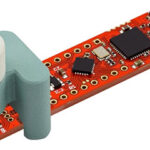A lidar scanner enables obstacle detection, navigation in self-driving cars, and avoidance.
Why use lidar scanners?
Lidar scanners, or Light Detection and Ranging scanners, are widely used in various industries for a range of applications. There are many reasons why people buy lidar scanners. They have their reasons why they use this advanced scanner technology, in which many businesses are taking advantage of this application.
Mapping and surveying
Lidar scanners are commonly used in mapping and surveying applications. They can create highly accurate and detailed 3D models of terrain, buildings, and other objects by measuring the distance to various surfaces using laser pulses. This data is valuable for urban planning, construction projects, environmental monitoring, and more.
Scanners for autonomous vehicles
Lidar is a key technology for autonomous vehicles (AVs). Lidar scanners help AVs perceive and understand their surroundings by generating detailed 3D maps of the environment in real time. It enables vehicles to detect and track objects, such as pedestrians, other vehicles, and obstacles, and make informed decisions based on that information.
Ideal for industrial and manufacturing applications
Lidar scanners find applications in industrial and manufacturing settings. They can be used for quality control, inspection, and monitoring processes. For example, in the automotive industry, lidar scanners can measure and verify the dimensions of car bodies or other components during production.
Good for robotics and drones
Lidar scanners are utilized in robotics and unmanned aerial vehicles (UAVs) for various purposes. They help robots navigate and avoid obstacles in complex environments. Drones equipped with lidar can create 3D maps of areas for surveillance, search and rescue operations, and agricultural analysis.
Environmental monitoring
Lidar scanners play a vital role in environmental monitoring applications. They can assess forest structures, monitor vegetation growth, measure water depth, and detect changes in the landscape. Lidar data aids in understanding ecosystems, tracking climate change impacts, and managing natural resources effectively.
Archaeology and cultural heritage
Lidar scanners have revolutionized the field of archaeology by enabling the discovery and mapping of ancient structures and landscapes. By penetrating dense vegetation and capturing detailed elevation data, lidar assists in identifying hidden archaeological features and planning excavation sites.
Research and development
Lidar scanners are valuable tools for researchers and developers in various fields. They facilitate the collection of accurate and detailed data for scientific studies, simulations, and modeling. Lidar technology is continually advancing, and by owning a scanner, researchers can explore new applications and improve existing techniques.
Lidar scanners can be at a reasonable price, and the decision to purchase one depends on the specific needs and budget of the buyer. Some industries may rely heavily on lidar technology and consider it a worthwhile investment, while others may choose to access lidar services through specialized companies or service providers.







